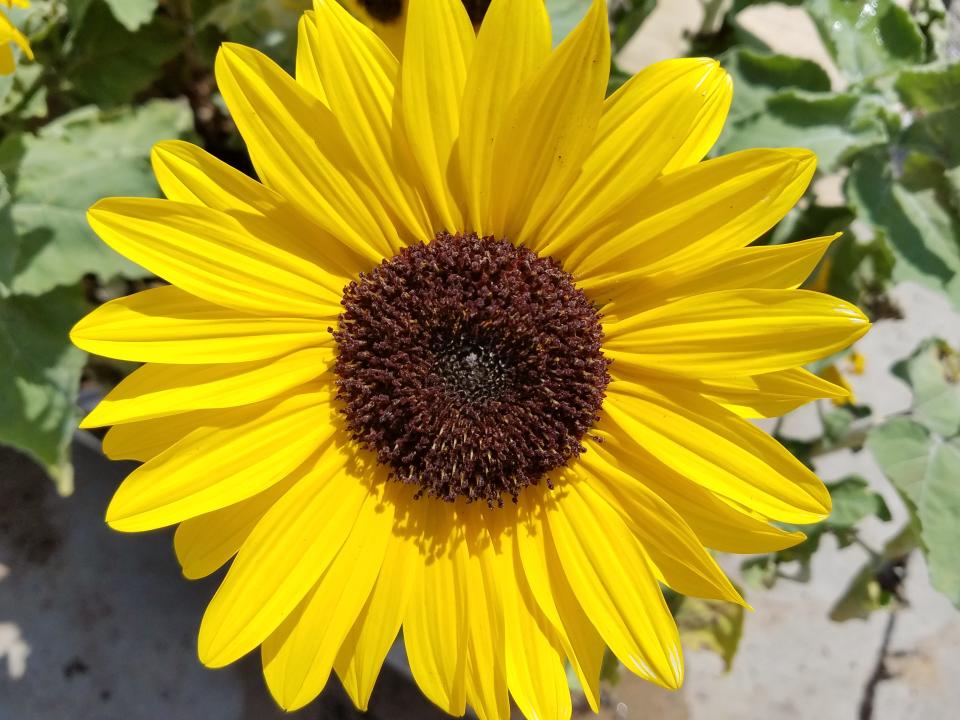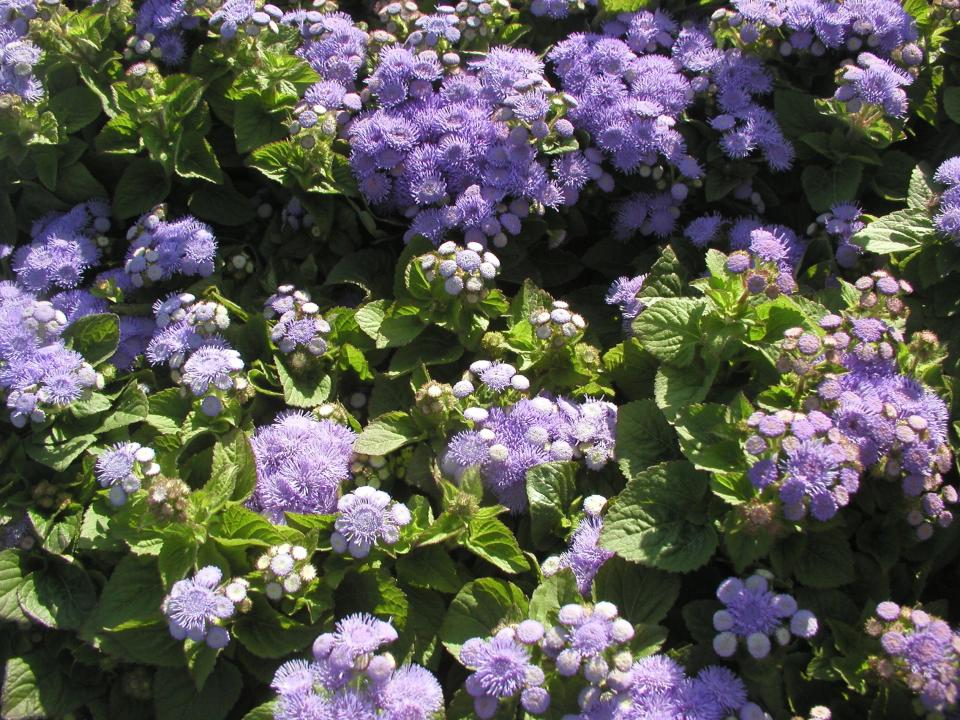Bring summer color inside by growing cut flowers in your garden | Sally Scalera
Summer is here, with plenty of warm weather ahead, so why not grow flowers you can cut and bring indoors to enjoy?
Growing cut flowers is easy and won’t require much effort once the plants get established. So, let’s check out some of the cut flowers that bloom during the warmer months, which is most of the year.
Two perennial cut flowers are Blue salvia, Salvia farinacea, and Gerbera daisy, Gerbera jamesonii.
Gerbera daisies produce flowers continually if they receive adequate water.
There are many Salvias from which to choose. The Saucy Red and Saucy Wine salvias grow vigorously and are continually in bloom. There are also the Wish salvias that were developed in Australia. If you love deep purple blooms, check out Love and Wishes. If you enjoy bright coral flowers, choose Ember’s Wish. And for burgundy flowers, there is Wendy’s Wish.
There are also many salvia species, such as Salvia urica, blue bush salvia, and our native annual tropical sage, Salvia coccinea. Tropical sage blooms are typically bright red, but there are recessive traits for pink and white blooms that can appear when the plants self-seed.
A quick internet search led me to an online salvia nursery that was dangerously tempting with so many salvias. Take, for example, Salvia X guaranitica, Rhythm and Blues, anise-scented sage. Imagine deep sapphire blue tubular flowers surrounded by black calyxes on black stems held above deep green anise-scented foliage. Does that not sound like a feast for both the eyes and nose?

Sunflowers are easy-to-grow cut flowers that can be grown from seed. If you prefer smaller sunflowers, look for the cultivar Elegance, which only grows 20 to 30 inches tall. They produce golden sunflowers with brown centers. The plants branch profusely, with each flower growing on a long stem.
Zinnias are another great choice. They produce flowers in every color except blue. These flowers are also heat-loving, which makes them perfect for Florida. The flowers come in single (resembling a daisy), double flowers and others even resemble dahlias.
Of course, we can’t forget about our native Blanket flower, Gaillardia pulchella, which is a self-seeding annual that can grow in the driest of sandy soils. The flowers are produced on long stems and come in single, double and even tubular. The flower colors can be orange-red with yellow tips or reddish-purple, but plants producing solid yellow, orange or red flowers are also available.

A great cut flower that is easy to grow from seed is Ageratum, commonly called floss flower. This is a good time to visit garden centers, because seed packets are available now. The cultivar Everest Blue is a tall-growing plant, 20 to 26 inches, that was developed for the cut flower market. Ageratum can be grown in the garden or containers.
Another cut flower option is our native Liatris, also called blazing star, which produces tall, narrow purple flower spikes that can grow three feet tall. Because the blooms are a great food source for butterflies, bees, and other pollinators, you may feel guilty bringing the blooms inside to enjoy.
Our state wildflower, coreopsis, also makes great cut flowers. There is a cultivar Presto, which produces 2-inch-wide blooms that are semi- or fully double. This hybrid won’t reseed as the basic Coreopsis species will.
If you want to grow a brightly colored, bird-shaped flower, the Bird-of-Paradise is your plant. This herbaceous perennial produces a large plant that is more of a shrub and produces gorgeous orange and blue flowers that look wonderful in flower arrangements or just displayed in a vase. The trick to keeping this plant gorgeous is to prune out the entire faded flower, along with the leaf that produced it, as far down near the base of the leaf as possible. This will keep the plant thinned out and growing strong.
When gathering cut flowers, it’s important to prepare and care for them properly so they survive for as long as possible. Here are the basic steps to take to ensure success:
Before you go outside to collect the flowers, fill the vases or containers that you will be using with room-temperature water.
Add some soda to the water to supply the flowers with sugar. For clear containers, use a clear soda like ginger ale or Sprite.
The addition of potassium silicate to the water will also prolong the life of the flowers.
Gather your cut flowers early in the morning, especially since it will already be warm to hot in the morning as summer progresses.
Before placing each flower in its container, cut the stem again at an angle so it doesn’t rest flat on the bottom. This will allow for better uptake of the water.
Remove leaves or other plant material so only clean stems are placed in the water.
Place your cut flowers in locations that are away from sunlight, drafts (such as those caused by ceiling fans and vents) and fruit. The cooler the temperatures, the longer the flowers will last. Locations near fruit aren’t good because fruit produces ethylene gas, which is harmful to flowers.
Here are steps for maintaining the flowers.
Check the flowers daily for dead leaves or petals that may have fallen into the water and remove them as needed.
Keep an eye on the water. If it becomes cloudy, change the water, and don’t forget to add some soda (and potassium silicate).
If growing a cut flower garden sounds fun, head to the garden center and check out their seed packets and potted flowers. Cell packs of flowers will give you a head start since you could plant some this weekend. No matter how you want to get started, bringing cut flowers inside to enjoy is an easy way to brighten a room.
Sally Scalera is an urban horticulture agent and master gardener coordinator for the University of Florida’s Institute of Food and Agriculture Sciences. Email her at sasc@ufl.edu.
More by Sally Scalera:
Here's how to find and treat Lychee Erinose Mites on your lychee trees
Releasing these wasps in your yard can save your citrus trees
Ground covers add beauty to your landscape, protect your soil
This article originally appeared on Florida Today: Grow these plants in your Florida yard to produce beautiful cut flowers

